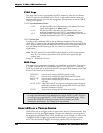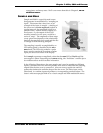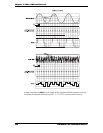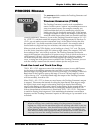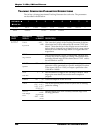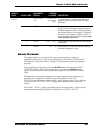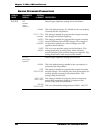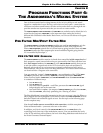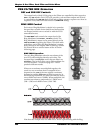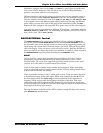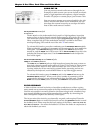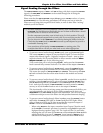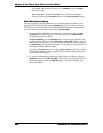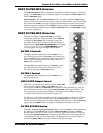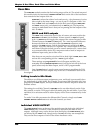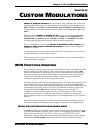
Chapter 8: Pre Filter, Post Filter and Voice Mixes
184 ANDROMEDA A6 REFERENCE MANUAL
PRE FILTER MIX OPERATION
OSC and SUB OSC Controls
The output levels of both VCOs going to the Filters are controlled by their respective
OSC 1 and OSC 2 knobs. Each VCO also provides a sub-oscillator output and its level
is controlled by the
SUB OSC knob. Each sub-oscillator outputs a square wave from its
respective VCO, tuned one octave below its
SEMITONE setting.
RING MOD Control
Each voice’s Ring Modulator is simple in its operation
but provides a wealth of new timbres and textures that
can be used on their own or mixed in with the VCOs’
unmodified waves.
The
RING MOD knob controls the output level of the
Ring Modulator into
FILTER 1, FILTER 2 or both. The
Ring Modulator’s output is also routed directly to the
POST FILTER MIX, bypassing the Filters. This dual audio
path allows you to filter the Ring Modulator’s output,
feed it directly to the outputs with no filtering, or both.
We’ll detail how to use this feature of the A6 on the
following page.
RING MOD Operation
The A6’s Ring Modulator takes the waveforms of the
two VCOs and multiplies them by each other. The
keyword here is multiplies: notice that we didn’t say
modulate. The A6 does allow you to FM-modulate one
VCO by the other – covered on page 109 – which
produces different results.
When two waveforms are multiplied together, the
result is a new waveform that is composed of two
frequencies: the sum of the two original waveforms’
frequencies and the difference of their frequencies. In
the following illustration, we start with two sine waves,
one at 300Hz and one at 1,200Hz. When multiplied, the
resultant waveform is composed of a 1,500Hz wave
(300 + 1,200) and a 900Hz wave (1,200 - 300).
Note that this example uses two sine waves. When experimenting with the Ring



